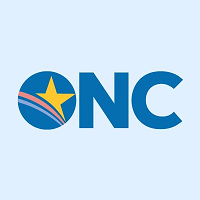 By Chris Muir and Alan Swenson, ONC
By Chris Muir and Alan Swenson, ONC
LinkedIn: Chris Muir
LinkedIn: Alan Swenson
X: @ONC_HealthIT
On December 11, 2023, ONC and the TEFCA Recognized Coordinating Entity® (RCE), The Sequoia Project, released the Fast Healthcare Interoperability Resources (FHIR)® Roadmap for TEFCASM Exchange V.2. This version updates the previous roadmap and continues the momentum already established by providing more details and guidance for the future of FHIR in TEFCA.
The plan for the Trusted Exchange Framework Common Agreement (TEFCA) always included Health Level 7 (HL7)® FHIR application programing interface (API) exchange, and now it is coming faster than you may have thought!
In January 2022, ONC and the TEFCA RCE jointly released the FHIR Roadmap for TEFCA Exchange (Roadmap) along with the Common Agreement and the QHIN Technical Framework (QTF) Version 1. The Roadmap indicated that TEFCA exchange will quickly develop the capacity to enable FHIR API exchange to keep pace with the evolving nature of technology and the health IT industry’s desire to move toward standardized APIs. Based on ONC’s experiences and feedback received over the past year, the FHIR Roadmap has been updated.
In the short-term, ONC and the TEFCA RCE anticipate “facilitated FHIR” exchange beginning to be implemented as part of TEFCA exchange as early as the first quarter of calendar year 2024 connected to the release of Common Agreement Version 2. As in Version 1, Version 2 of the Roadmap describes facilitated FHIR exchange in which Qualified Health Information Networks (QHINs)TM provide the network infrastructure to support FHIR API-based exchange between TEFCA Participants and Subparticipants from different QHINs. Specifically, if a TEFCA Participant or Subparticipant wants to obtain a patient’s data using FHIR, they will go to their QHINs to determine who has the patient information. Patient discovery will take place through the QHIN-to-QHIN interaction, including discovery of the FHIR endpoints for those that have the patient data. The initiating Participant or Subparticipant will then directly (i.e., without going through the QHIN) and securely query each of those endpoints.
To ensure consistent implementation of facilitated FHIR exchange in TEFCA, the RCE worked hard to develop and test the TEFCA Facilitated FHIR Implementation Guide (TEFCA FHIR IG) that will be reflected in QTF Version 2. The implementation guide supports both business-to-business and consumer-facing individual access workflows and relies on the standards-based HL7 Security for Scalable Registration, Authentication, and Authorization FHIR Implementation Guide Version 1.0.
The TEFCA RCE published Draft 2 of the TEFCA FHIR IG in December 2022 and tested it in three connectathons, organized by HL7 and IHE International.
The release of QTF Version 2 will accompany publication of Common Agreement Version 2, which together will lay the policy and technical frameworks for implementing facilitated FHIR in TEFCA exchange. ONC and the TEFCA RCE anticipate publishing these documents in the first quarter of calendar year 2024, at which time implementation of facilitated FHIR will begin.
Looking forward, the updated Roadmap describes two more phases of FHIR implementation beyond facilitated FHIR exchange. The next phase, QHIN-to-QHIN FHIR Exchange, enable QHINs to leverage FHIR-based exchange for exchange between QHINs while continuing to support non-FHIR approaches within the QHINs’ internal networks.
The last phase, End-to-End exchange, would permit a Participant/Subparticipant to seamlessly exchange FHIR data between themselves and other network members through the QHINs and multiple other intermediaries both within a QHINs’ network and through the TEFCA-governed network.
ONC and the TEFCA RCE commend the effort put forth by the TEFCA and FHIR community. There is great optimism about realizing the future of data exchange for the country in 2024 and beyond!
This article was originally published on the Health IT Buzz and is syndicated here with permission.

